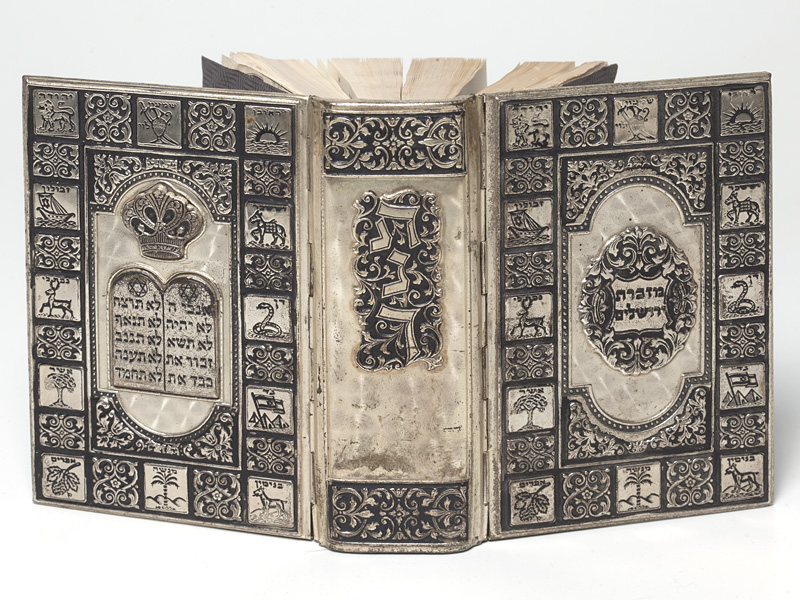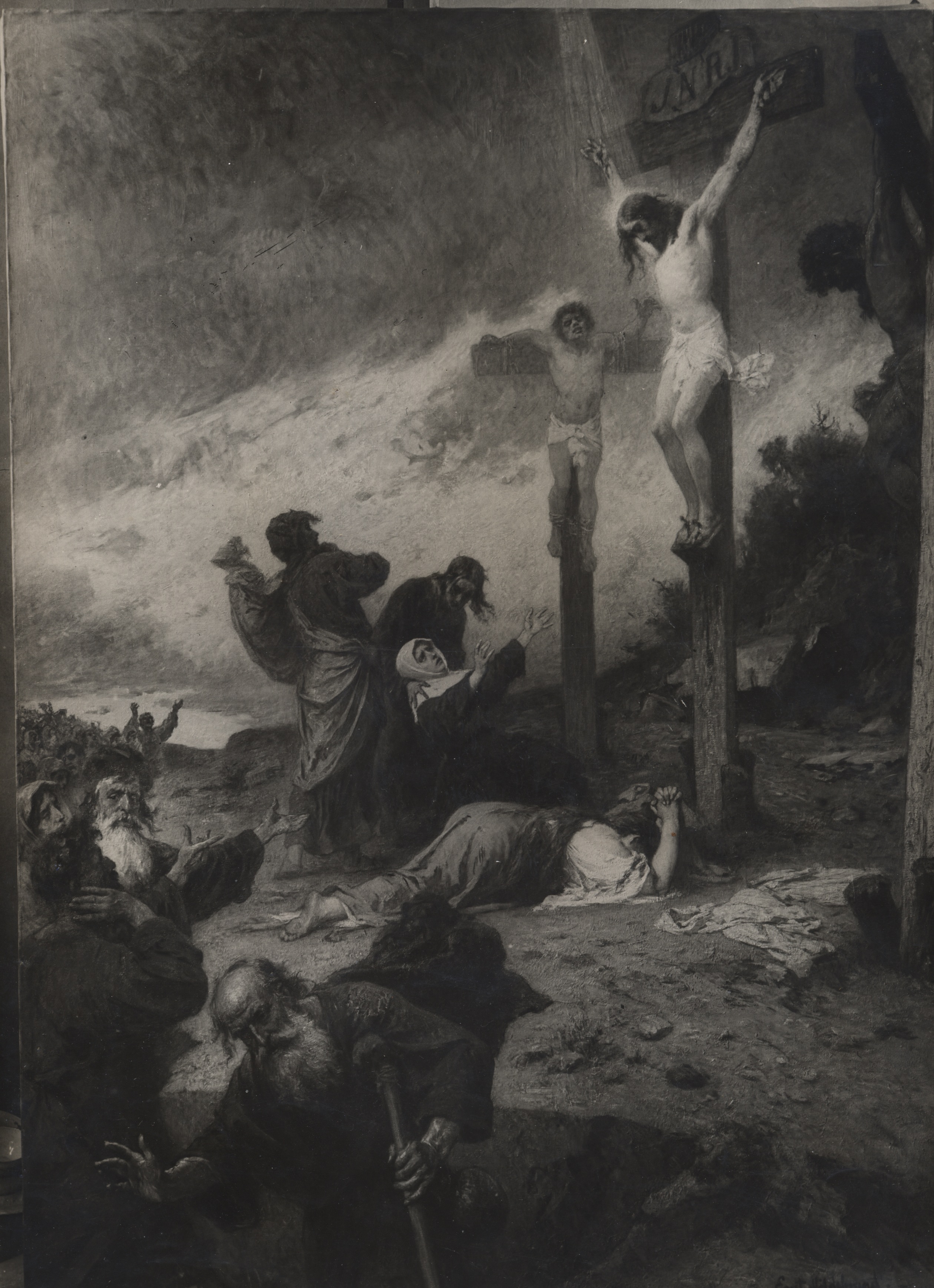|
Urtext (Biblical Studies)
In biblical studies, the Urtext is the theorized original, uniform text of the Hebrew Bible (Tanakh), preceding both the Septuagint (LXX) and the Masoretic Text (MT). Since the 19th century there has been much scholarly work to regain this ''Urtext''. The theory that there was an Urtext was advocated by Paul de Lagarde. Today it is disputed that there ever was such a uniform text.Isaac Leo Seeligmann, Robert Hanhart, Hermann Spieckermann: ''The Septuagint Version of Isaiah and Cognate Studies'', Tübingen 2004, pages 33-34. See also * Documentary hypothesis * Supplementary hypothesis In biblical studies, the supplementary hypothesis proposes that the Pentateuch (the first five books of the Bible) was derived from a series of direct additions to an existing corpus of work. It serves as a revision to the earlier documentary hy ... * Q source References Biblical criticism Early versions of the Bible Hypothetical documents {{bible-criticism-stub ... [...More Info...] [...Related Items...] OR: [Wikipedia] [Google] [Baidu] |
Texts Of The OT
Text may refer to: Written word * Text (literary theory), any object that can be read, including: **Religious text, a writing that a religious tradition considers to be sacred **Text, a verse or passage from scripture used in expository preaching **Textbook, a book of instruction in any branch of study Computing and telecommunications *Plain text, unformatted text *Text file, a type of computer file opened by most text software * Text string, a sequence of characters manipulated by software *Text message, a short electronic message designed for communication between mobile phone users * Text (Chrome app), a text editor for the Google Chrome web browser *tEXt, an ancillary chunk in the PNG image file format *Text, the former name of Apple's Messages instant messenger *Text (company), an AI and customer service software company Arts and media *TEXT, a Swedish band *'' Text & Talk'' (formerly ''Text''), an academic journal *"Text", a 2010 song produced by J.R. Rotem, featuring M ... [...More Info...] [...Related Items...] OR: [Wikipedia] [Google] [Baidu] |
Biblical Studies
Biblical studies is the academic application of a set of diverse disciplines to the study of the Bible, with ''Bible'' referring to the books of the canonical Hebrew Bible in mainstream Jewish usage and the Christian Bible including the canonical Old Testament and New Testament, respectively.''Introduction to Biblical Studies, Second Edition'' by Steve Moyise (Oct 27, 2004) pages 11–12 For its theory and methods, the field draws on disciplines ranging from ancient history, historical criticism, philology, theology, textual criticism, literary criticism, historical backgrounds, mythology, and comparative religion. Definition The ''Oxford Handbook of Biblical Studies'' defines the field as a set of various, and in some cases independent disciplines for the study of the collection of ancient texts generally known as the Bible.''The Oxford Handbook of Biblical Studies'' by J. W. Rogerson and Judith M. Lieu (May 18, 2006) page xvii These disciplines include but are not li ... [...More Info...] [...Related Items...] OR: [Wikipedia] [Google] [Baidu] |
Hebrew Bible
The Hebrew Bible or Tanakh (;"Tanach" . '' Random House Webster's Unabridged Dictionary''. ; ; or ), also known in Hebrew as (; ), is the canonical collection of scriptures, comprising the Torah (the five Books of Moses), the Nevi'im (the Books of the Prophets), and the [...More Info...] [...Related Items...] OR: [Wikipedia] [Google] [Baidu] |
Septuagint
The Septuagint ( ), sometimes referred to as the Greek Old Testament or The Translation of the Seventy (), and abbreviated as LXX, is the earliest extant Greek translation of the Hebrew Bible from the original Biblical Hebrew. The full Greek title derives from the story recorded in the Letter of Aristeas to Philocrates that "the laws of the Jews" were translated into Koine Greek, the Greek language at the request of Ptolemy II Philadelphus (285–247 BC) by seventy-two Hebrew sofer, translators—six from each of the Twelve Tribes of Israel.Megillah (Talmud), Tractate Megillah 9](9a)/ref>Soferim (Talmud), Tractate Soferim 1](1:7-8)/ref> Textual criticism, Biblical scholars agree that the Torah, first five books of the Hebrew Bible were translated from Biblical Hebrew into Koine Greek by Jews living in the Ptolemaic Kingdom, centred on the History of the Jews in Alexandria, large community in Alexandria, probably in the early or middle part of the 3rd century BC. The remainin ... [...More Info...] [...Related Items...] OR: [Wikipedia] [Google] [Baidu] |
Masoretic Text
The Masoretic Text (MT or 𝕸; ) is the authoritative Hebrew and Aramaic text of the 24 books of the Hebrew Bible (''Tanakh'') in Rabbinic Judaism. The Masoretic Text defines the Jewish canon and its precise letter-text, with its vocalization and accentuation known as the ''masora''. Referring to the Masoretic Text, ''masora'' specifically means the diacritic markings of the text of the Jewish scriptures and the concise marginal notes in manuscripts (and later printings) of the Tanakh which note textual details, usually about the precise spelling of words. It was primarily copied, edited, and distributed by a group of Jews known as the Masoretes between the 7th and 10th centuries of the Common Era (CE). The oldest known complete copy, the Leningrad Codex, dates to 1009 CE and is recognized as the most complete source of biblical books in the Ben Asher tradition. It has served as the base text for critical editions such as Biblia Hebraica Stuttgartensia and Adi. The d ... [...More Info...] [...Related Items...] OR: [Wikipedia] [Google] [Baidu] |
Paul De Lagarde
Paul Anton de Lagarde (2 November 1827 – 22 December 1891) was a German biblical scholar and orientalist, sometimes regarded as one of the greatest orientalists of the 19th century. Lagarde's anti-Semitism, anti-Slavism, and aversion to traditional Christianity are viewed as having been among the most influential precursors of Nazism. Life and career Paul Bötticher was born in Berlin to Johann Friedrich Wilhelm and Luise Bötticher. His father was a philologist who taught languages at the Friedrich Wilhelm Gymnasium. 18-year old Luise died days after Paul was born. A bereft Wilhelm blamed his newborn son for the loss and treated him miserably. His woeful upbringing led him to feel nothing upon his father's death. Two maternal aunts nurtured Paul emotionally and financially. Ernestine de Lagarde was Luise's aunt, and she eventually adopted Paul. Bötticher attended Humboldt University of Berlin from 1844–6 where he studied Oriental languages, theology, and philosophy und ... [...More Info...] [...Related Items...] OR: [Wikipedia] [Google] [Baidu] |
Documentary Hypothesis
The documentary hypothesis (DH) is one of the models used by biblical scholars to explain the origins and composition of the Torah (or Pentateuch, the first five books of the Bible: Book of Genesis, Genesis, Book of Exodus, Exodus, Leviticus, Book of Numbers, Numbers, and Deuteronomy). A version of the documentary hypothesis, frequently identified with the German scholar Julius Wellhausen, was almost universally accepted for most of the 20th century. It posited that the Pentateuch is a compilation of four originally independent documents: the Jahwist, Elohist, Deuteronomist, and Priestly source, Priestly sources, frequently referred to by their initials.hence the alternative name ''JEDP'' for the documentary hypothesis The first of these, J, was dated to the Solomon, Solomonic period (c. 950 BCE). E was dated somewhat later, in the 9th century BCE, and D was dated just before the reign of Josiah, King Josiah, in the 7th or 8th century BCE. Finally, P was generally dated to the tim ... [...More Info...] [...Related Items...] OR: [Wikipedia] [Google] [Baidu] |
Supplementary Hypothesis
In biblical studies, the supplementary hypothesis proposes that the Pentateuch (the first five books of the Bible) was derived from a series of direct additions to an existing corpus of work. It serves as a revision to the earlier documentary hypothesis, which proposed that independent and complete narratives were later combined by redactors to create the Pentateuch. The supplementary hypothesis was developed over the 19th and 20th centuries, primarily deriving from a dissatisfaction with the adequacy of the documentary hypothesis, and came to a head in the 1970s with the publication of works by John Van Seters, Rolf Rendtorff, and Hans Heinrich Schmid. In their book, ''An Introduction to the Bible'', Kugler and Hartin argue that "the work of John Van Seters best reflects the revival of the supplementary hypothesis." Van Seters' summation of the hypothesis accepts "three sources or literary strata within the Pentateuch," which have come to be known as the Yahwist (J), the Priest ... [...More Info...] [...Related Items...] OR: [Wikipedia] [Google] [Baidu] |
Q Source
The Q source (also called The Sayings Gospel, Q Gospel, Q document(s), or Q; from , meaning "source") is a hypothesized written collection of primarily Jesus' sayings (, ). Q is part of the common material found in the Gospels of Matthew and Luke but not in the Gospel of Mark. According to this hypothesis, this material was drawn from the early Church's oral gospel traditions. Along with Marcan priority, Q had been hypothesized by 1900, and remains one of the foundations of most modern gospel scholarship. Funk, Robert W., Roy W. Hoover, and the Jesus Seminar. ''The Five Gospels.'' HarperSanFrancisco. 1993. "Introduction," pp. 1–30. B. H. Streeter formulated a widely accepted view of Q: that it was written in Koine Greek; that most of its contents appear in Matthew, in Luke, or in both; and that Luke better preserves the text's original order than does Matthew. In the two-source hypothesis, the three-source hypothesis and the Q+/Papias hypothesis, Matthew and Luke bot ... [...More Info...] [...Related Items...] OR: [Wikipedia] [Google] [Baidu] |
Biblical Criticism
Modern Biblical criticism (as opposed to pre-Modern criticism) is the use of critical analysis to understand and explain the Bible without appealing to the supernatural. During the eighteenth century, when it began as ''historical-biblical criticism,'' it was based on two distinguishing characteristics: (1) the concern to avoid dogma and bias by applying a neutral, non-sectarian, reason-based judgment to the study of the Bible, and (2) the belief that the reconstruction of the historical events behind the texts, as well as the history of how the texts themselves developed, would lead to a correct understanding of the Bible. This sets it apart from earlier, pre-critical methods; from the anti-critical methods of those who oppose criticism-based study; from the post-critical orientation of later scholarship; and from the multiple distinct schools of criticism into which it evolved in the late twentieth and early twenty-first centuries. The emergence of biblical criticism is ... [...More Info...] [...Related Items...] OR: [Wikipedia] [Google] [Baidu] |
Early Versions Of The Bible
Early may refer to: Places in the United States * Early, Iowa, a city * Early, Texas, a city * Early Branch, a stream in Missouri * Early County, Georgia * Fort Early, Georgia, an early 19th century fort Music * Early B, stage name of Jamaican dancehall and reggae deejay Earlando Arrington Neil (1957–1994) * Early James, stage name of American singer-songwriter Fredrick Mullis Jr. (born 1993) * ''Early'' (Scritti Politti album), 2005 * ''Early'' (A Certain Ratio album), 2002 * Early Records, a record label Other uses * Early (name), a list of people and fictional characters with the given name or surname * Early effect, an effect in transistor physics * Early, a synonym for ''hotter'' in stellar classification In astronomy, stellar classification is the classification of stars based on their stellar spectrum, spectral characteristics. Electromagnetic radiation from the star is analyzed by splitting it with a Prism (optics), prism or diffraction gratin ... See also * * ... [...More Info...] [...Related Items...] OR: [Wikipedia] [Google] [Baidu] |



